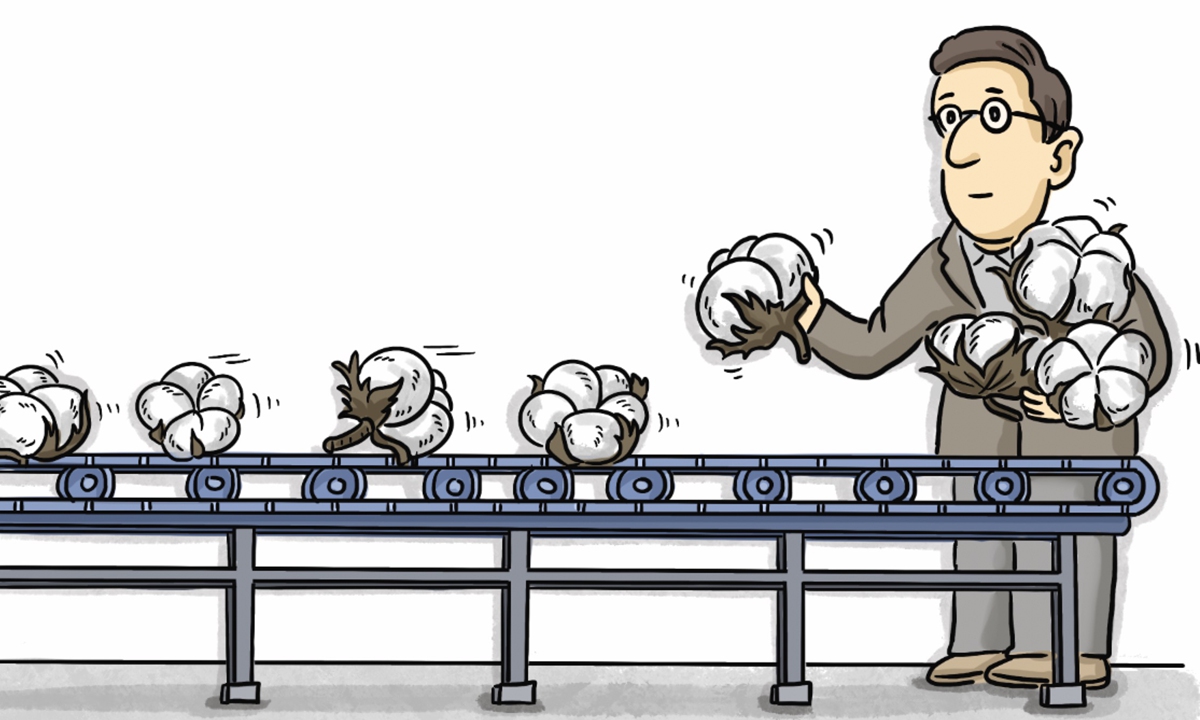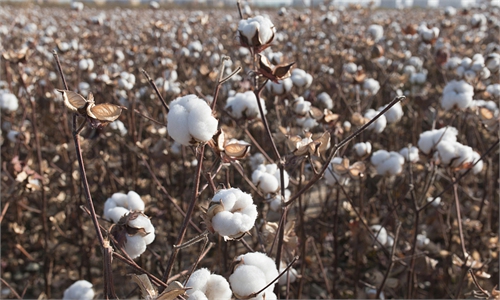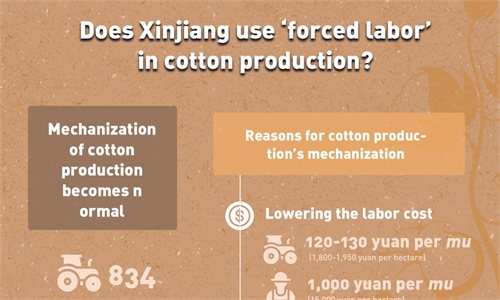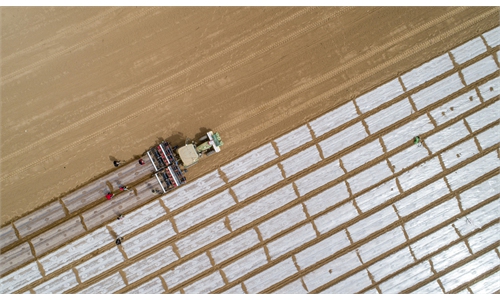COMMENTS / EXPERT ASSESSMENT
China’s actual cotton imports irrelevant to US ban on Xinjiang cotton

Illustration: Xia Qing/GT
Just as the Biden administration is expanding its attacks on China from cotton to other products in Northwest China's Xinjiang Uygur Autonomous Region, foreign media recently reported that the arbitrary ban and campaign led by the US against Xinjiang cotton may push China to allow more cotton imports than usual this year.
Citing a prediction of an analyst at Huatai Futures, the Bloomberg said China may further increase cotton imports to meet rising global demand for textiles in addition to the current plan for this year, suggesting it is a result of the US-led brutal attack and slander on Xinjiang cotton.
It seems some observers have apparently missed the point. For several years, China has been adjusting its cotton import plans in accordance with the actual balance between supply and demand of the industry in the year. It's a necessary move to meet cotton textile export enterprises' demands for raw materials to fulfill market orders, rather than a special measure after the US' arbitrary ban.
China has issued a 700,000-tons quota for cotton imports in 2021, all of which is for non-state traders and will be subject to a sliding-scale tariffs system, according to a note published on the site of National Development and Reform Commission (NDRC), the top planner of the country, at the end of April. Before the COVID-19 outbreak, the number was 800,000 tons for 2018 and 2019.
With the accelerated development of the domestic cotton textile industry in recent years, to adjust the nation's cotton import plan according to actual demand, has increasingly become a common measure for the industry to adapt to new changes in international markets.
Firstly, this measure is conducive to the domestic textile industry to improve the supply structure of raw materials. In order to meet the needs of the middle and high-end market, the domestic textile industry, especially garment export firms have need to expand cotton imports. Given the accelerated recovery of the global economy in the post-epidemic era, the demand for textile products has also increased, so the demand for cotton will likely continue to show an increasing trend.
Second, expanding cotton imports can reduce the cost for domestic textile enterprises and enhance their international competitiveness. Currently, international cotton has an apparent price advantage comparing with domestic supply. To expand cotton imports will reduce the costs for companies manufacturing middle and high-end products. By narrowing down the price gap between domestic and foreign market, the competitiveness of textile exporting companies will be largely strengthened.
Although the US' cotton ban on Xinjiang cotton has impacted textile export industries and market sentiment to some extent, this crackdown on Chinese enterprises and industries under the guise of human rights is doomed to fail.
Xinjiang cotton is regarded as being of high quality, and it is already in short supply in the domestic market. Its dependence on foreign markets is low, and the risk caused by the US' botched lies is controllable. More importantly, Chinese manufacturing enjoy strong advantage in global market, which is highly recognized in global market. American lies cannot fool global consumers for long. Its scheme can only affect some people in the short term, not market demand over the long term.
Li Chunding is professor and head of the Economics and Trade Department with the College of Economics and Management at China Agricultural University (CAU). Li Donglin is doctoral student of College of Economics and Management at CAU. bizopinion@globaltimes.com.cn



